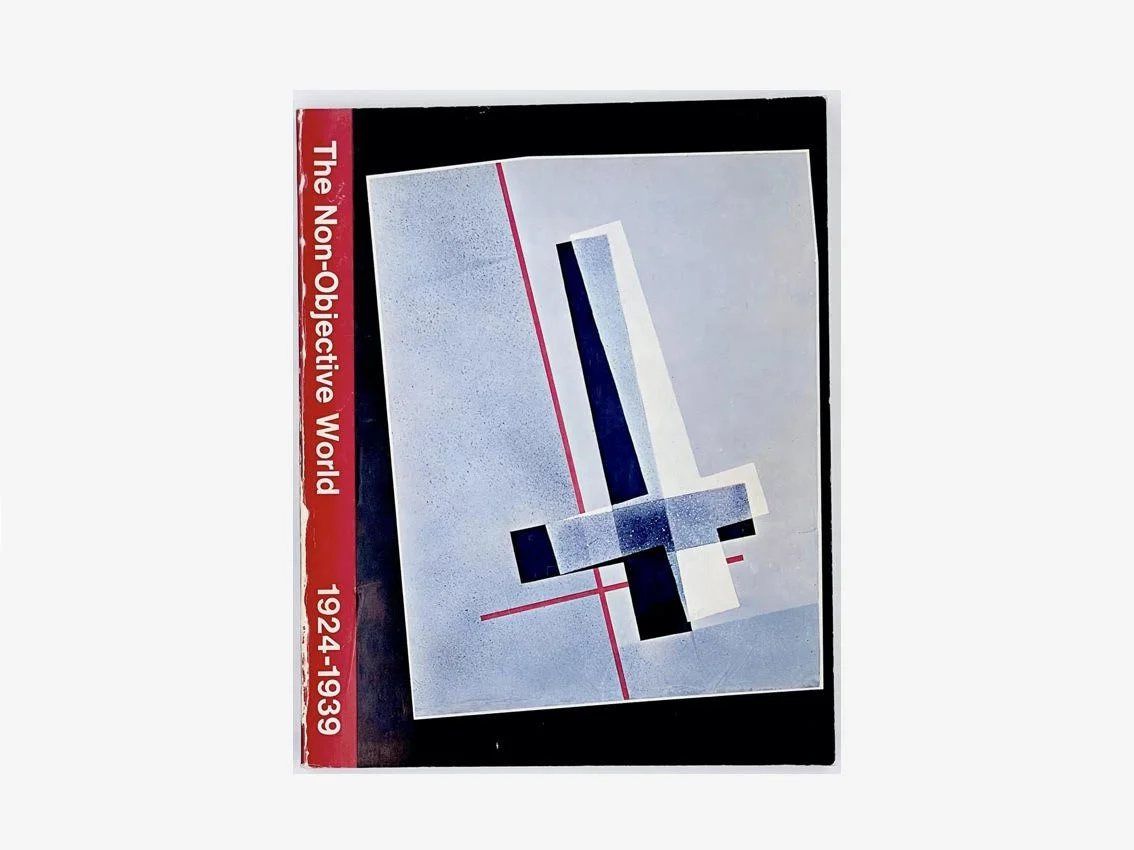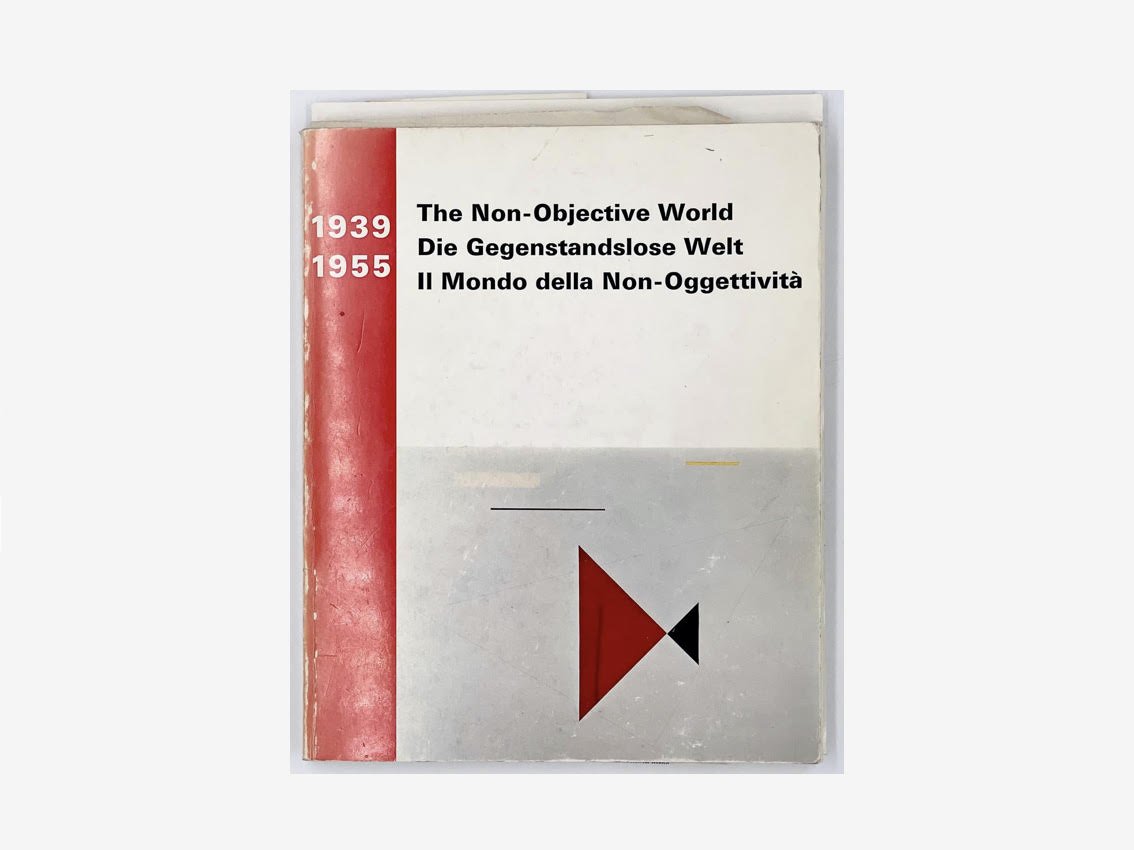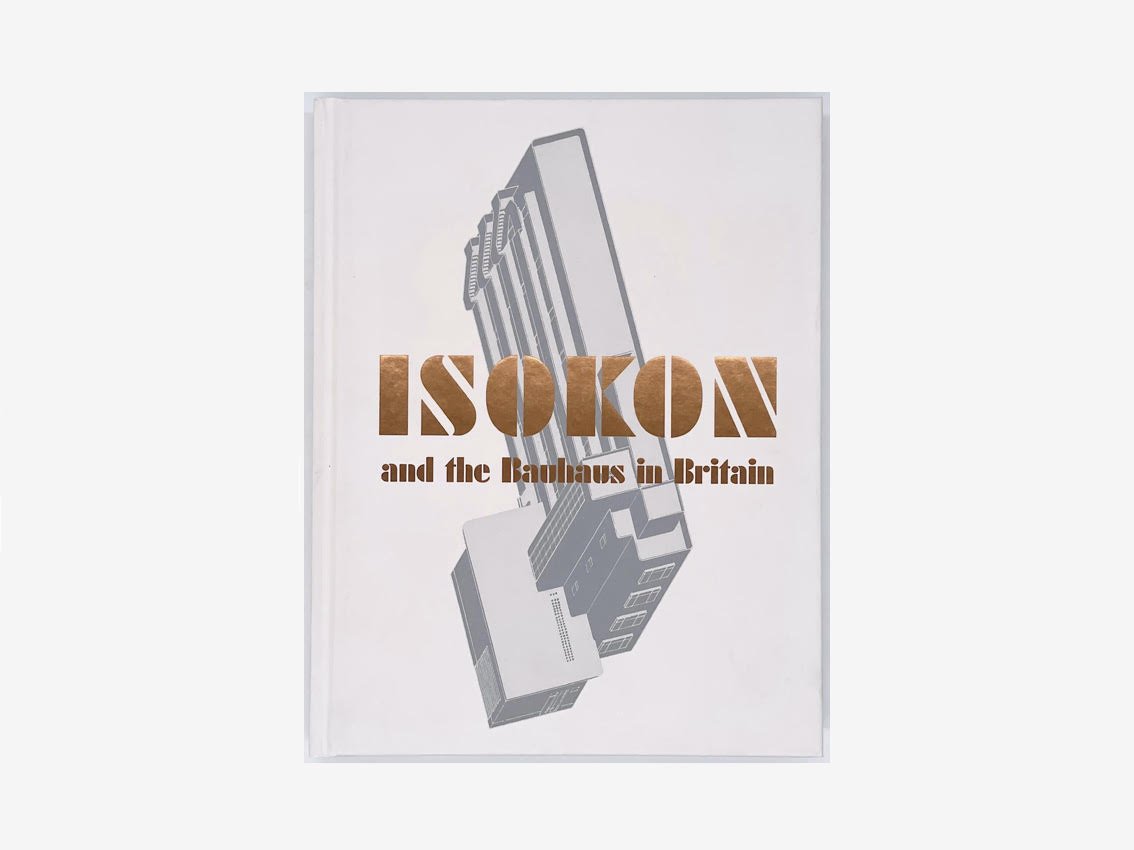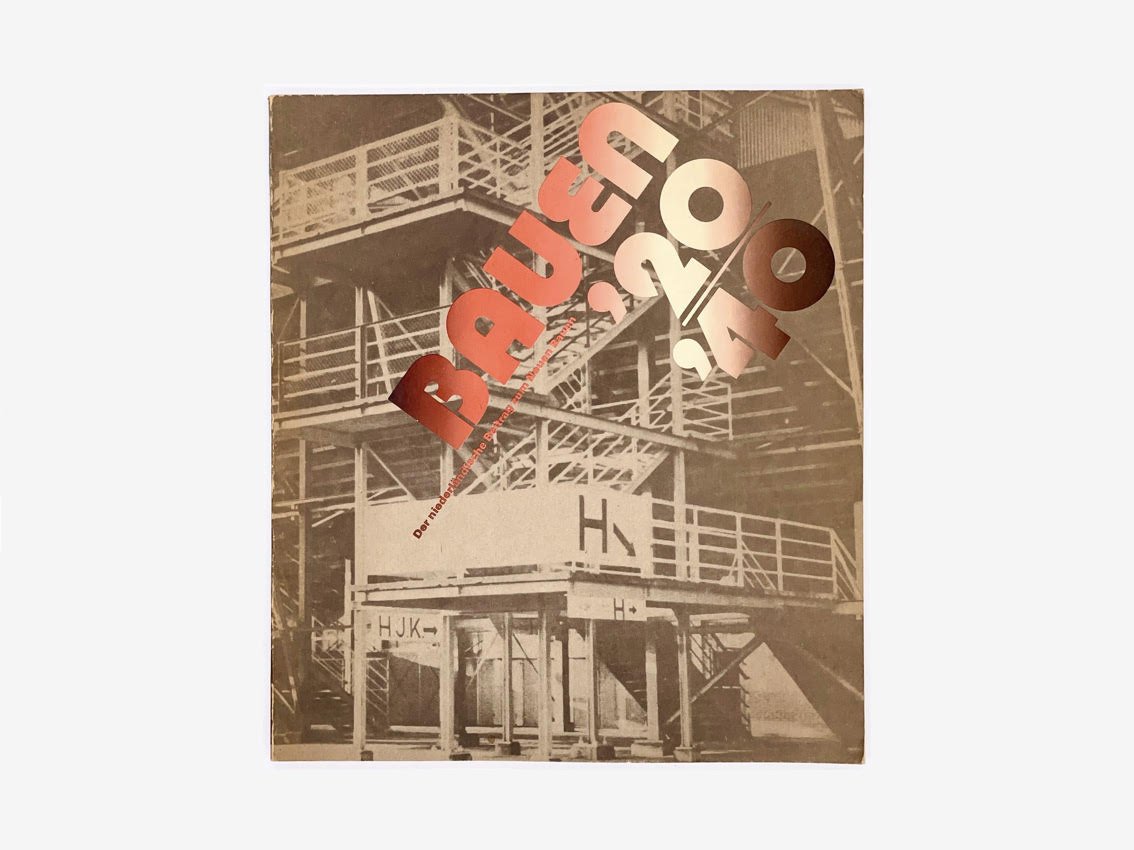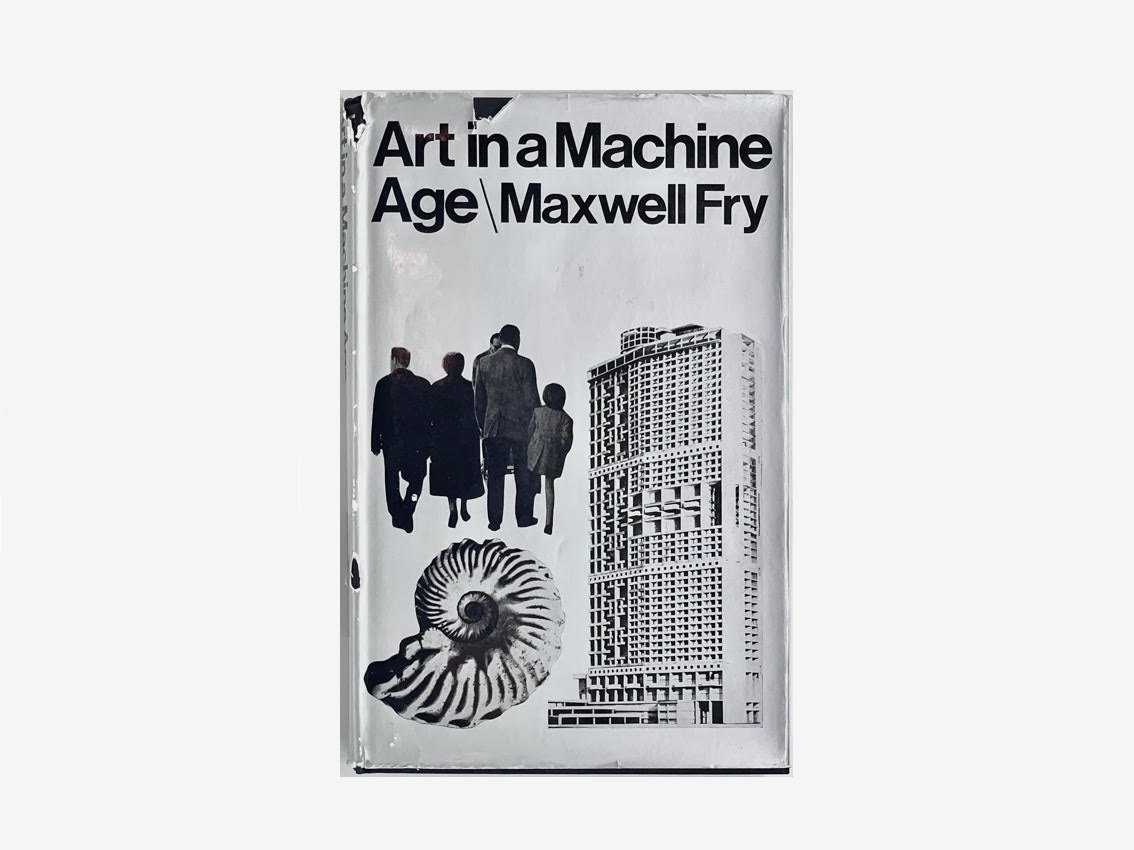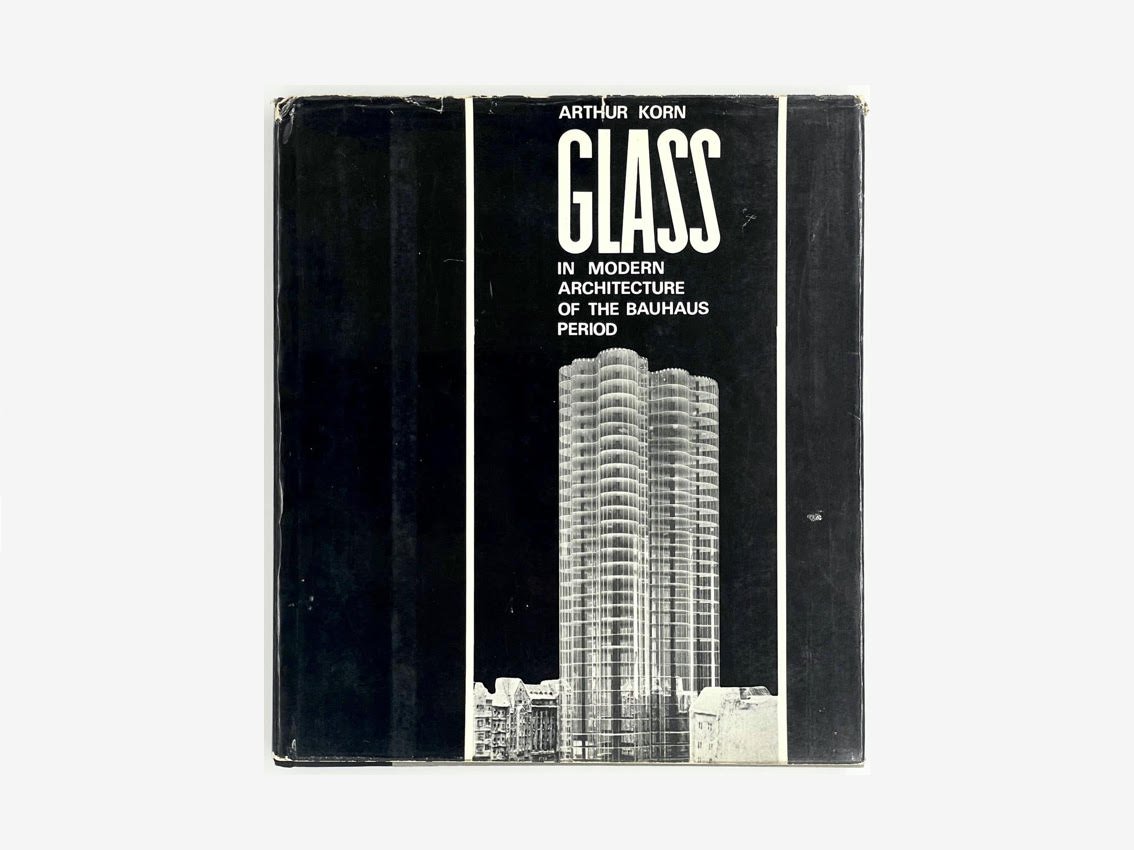 Image 1 of 2
Image 1 of 2

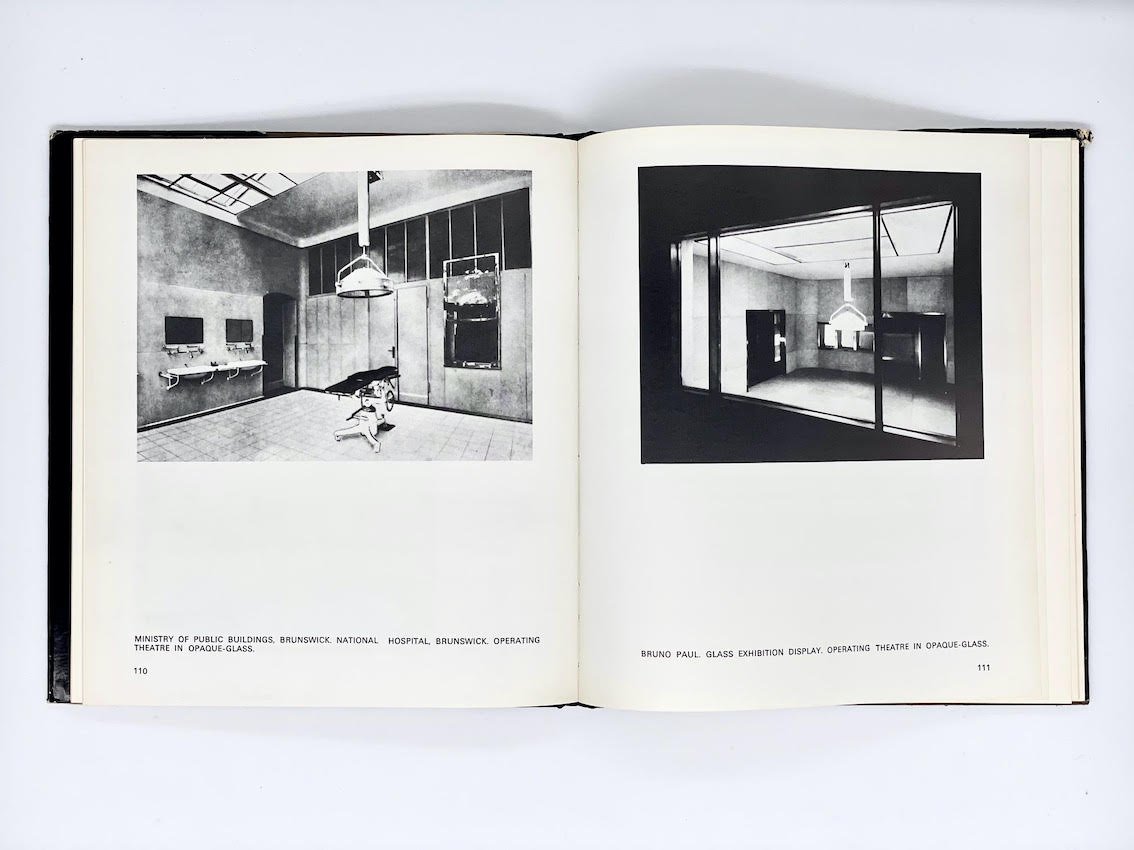 Image 2 of 2
Image 2 of 2



Glass in Modern Architecture of the Bauhaus Period 1968
English translation of Arthur Korn’s Glas im Bau 1926. With a foreword by Dennis Sharp. Hundreds of photographic illustrations of buildings by Le Corbusier & Jeanneret, Gropius, the Luckhardt brothers, Mies, Bruno Paul etc.
Title: Glass in Modern Architecture of the Bauhaus Period
Author: Arthur Korn, foreword by Dennis Sharp
Publisher: G. Braziller, New York
Publication date: 1968 “This edition first published in 1968”
Format: Hardcover. Grey 3/4 cloth boards with black spine. Black dust jacket with photograph.
Total Pages: 142
Images: 100 + images
Condition: Very good. dust jacket has some edge wear, chips and rubbing mostly at the spine tips. other minor wear otherwise very good..
Provenance: The Library of Dr Alastair Grieve
Stock Number: RB02349
Introduction to the First Edition:
“Glass is an extraordinary material. It gave us the beauty of medieval stained glass windows. Tightly held between supporting piers they opened a door to allow a glimpse of paradise in luminous colors from the shadow of the grave.
Nothing has been lost from the richness of those earlier creations, but glass has now been associated with other materials to meet new functions. A new glass age has begun, which is equal in beauty to the old one of Gothic windows.
Up to the present time glass has been a secondary building material, which remained subservient in spite of all its intrinsic ornamental strength, in spite of its crucial position in the interplay of structural forces, in spite of its underlining contrast with the masonry of the walls. The contribution of the present age is that it is now possible to have an independent wall of glass, a skin of glass around a building; no longer a solid wall with windows. Even though the window might be the dominant part — this window is the wall itself, or in other words, this wall is itself the window. And with this we have come to a turning point. It is something quite new compared to the achievements through the centuries…it is the disappearance of the outside wall — the wall, which for thousands of years had to be made of solid materials, such as stone or timber or clay products. But in the situation now, the outside wall is no longer the first impression one gets of a building. It is the interior, the spaces in depth and the structural frame which delineates them, that one begins to notice through the glass wall. This wall barely visible, and can only be seen when there are reflected lights, distortions or mirror effects.”
English translation of Arthur Korn’s Glas im Bau 1926. With a foreword by Dennis Sharp. Hundreds of photographic illustrations of buildings by Le Corbusier & Jeanneret, Gropius, the Luckhardt brothers, Mies, Bruno Paul etc.
Title: Glass in Modern Architecture of the Bauhaus Period
Author: Arthur Korn, foreword by Dennis Sharp
Publisher: G. Braziller, New York
Publication date: 1968 “This edition first published in 1968”
Format: Hardcover. Grey 3/4 cloth boards with black spine. Black dust jacket with photograph.
Total Pages: 142
Images: 100 + images
Condition: Very good. dust jacket has some edge wear, chips and rubbing mostly at the spine tips. other minor wear otherwise very good..
Provenance: The Library of Dr Alastair Grieve
Stock Number: RB02349
Introduction to the First Edition:
“Glass is an extraordinary material. It gave us the beauty of medieval stained glass windows. Tightly held between supporting piers they opened a door to allow a glimpse of paradise in luminous colors from the shadow of the grave.
Nothing has been lost from the richness of those earlier creations, but glass has now been associated with other materials to meet new functions. A new glass age has begun, which is equal in beauty to the old one of Gothic windows.
Up to the present time glass has been a secondary building material, which remained subservient in spite of all its intrinsic ornamental strength, in spite of its crucial position in the interplay of structural forces, in spite of its underlining contrast with the masonry of the walls. The contribution of the present age is that it is now possible to have an independent wall of glass, a skin of glass around a building; no longer a solid wall with windows. Even though the window might be the dominant part — this window is the wall itself, or in other words, this wall is itself the window. And with this we have come to a turning point. It is something quite new compared to the achievements through the centuries…it is the disappearance of the outside wall — the wall, which for thousands of years had to be made of solid materials, such as stone or timber or clay products. But in the situation now, the outside wall is no longer the first impression one gets of a building. It is the interior, the spaces in depth and the structural frame which delineates them, that one begins to notice through the glass wall. This wall barely visible, and can only be seen when there are reflected lights, distortions or mirror effects.”

